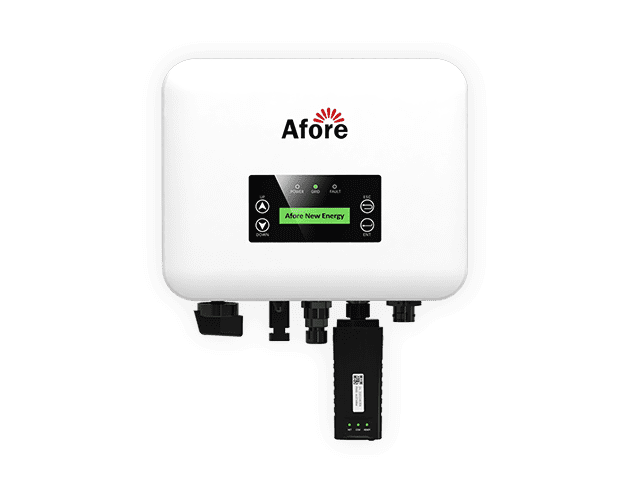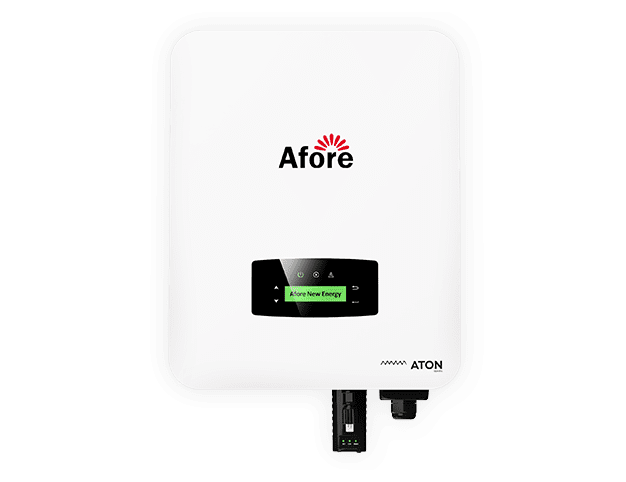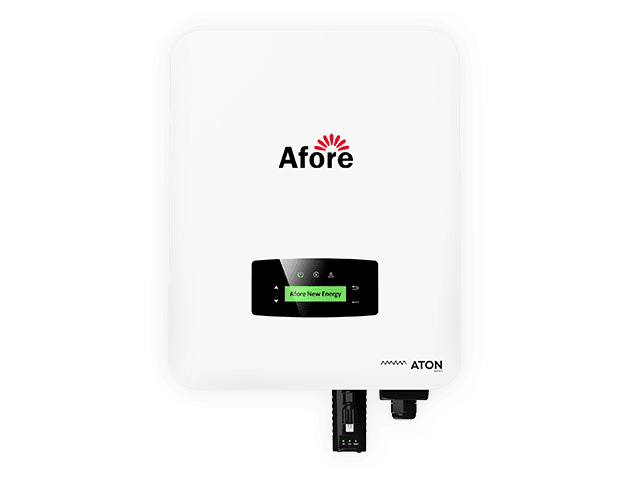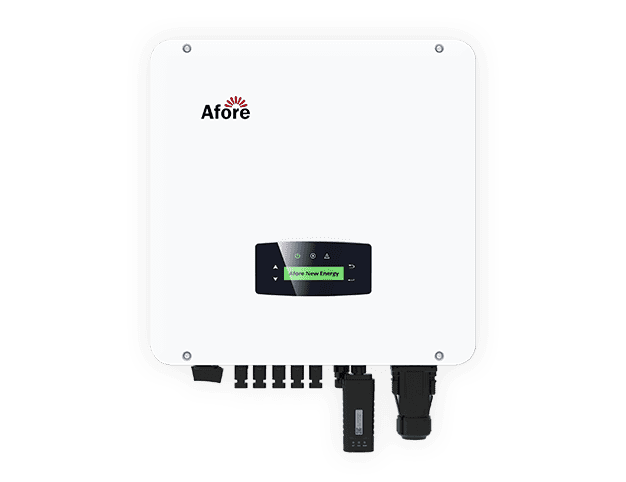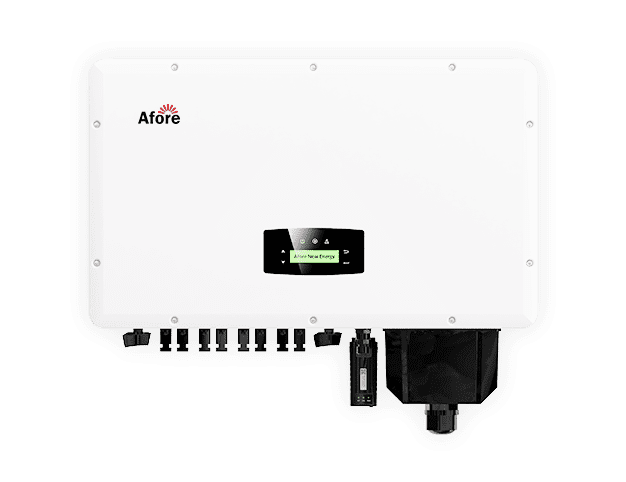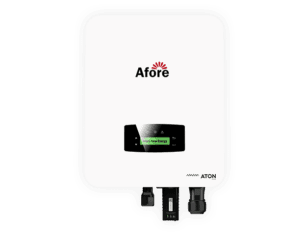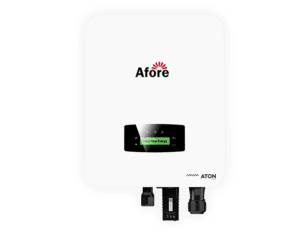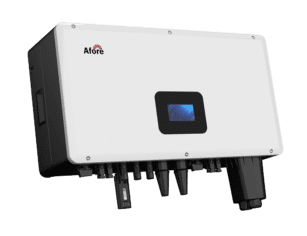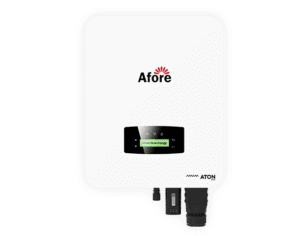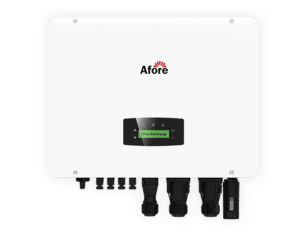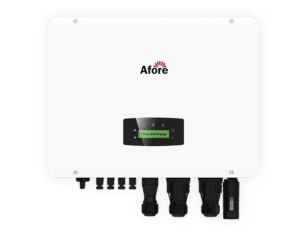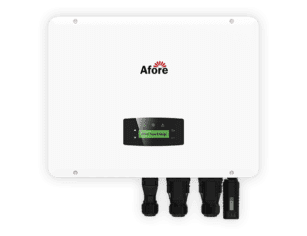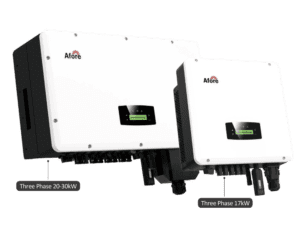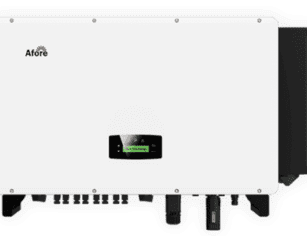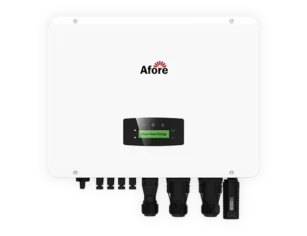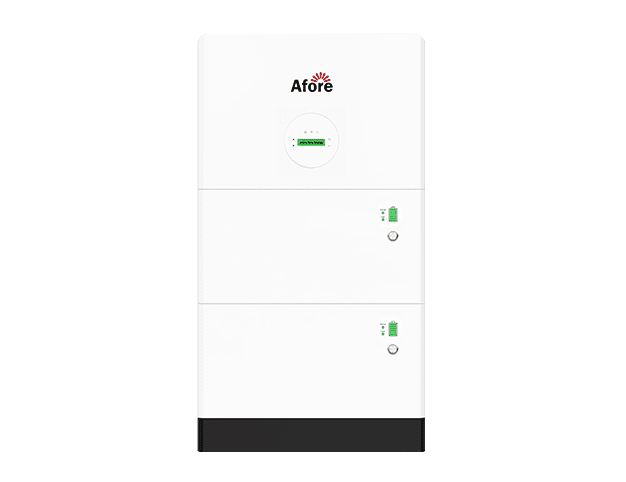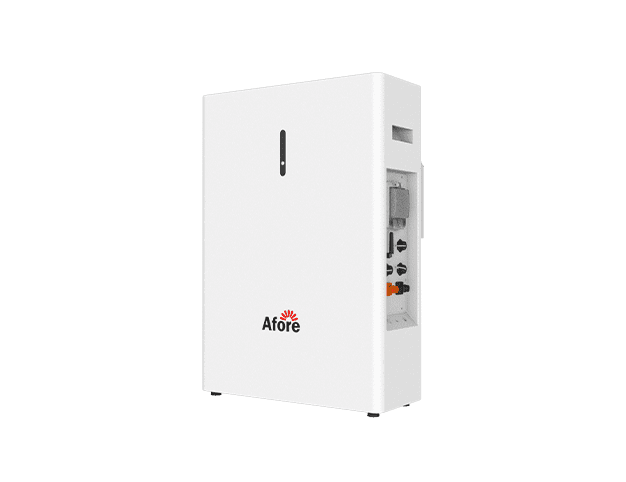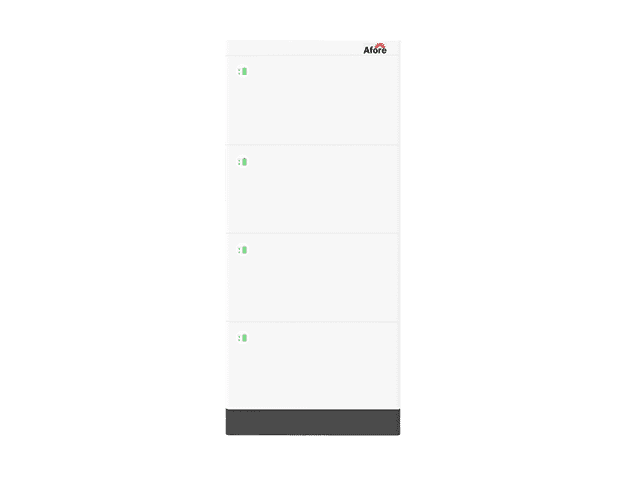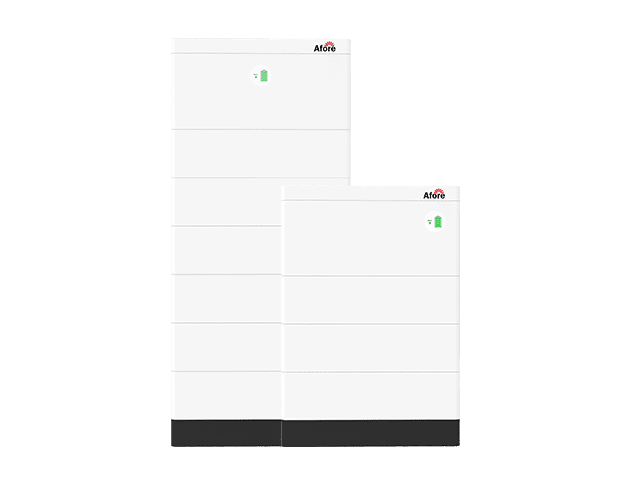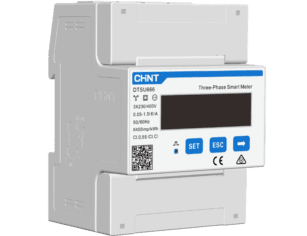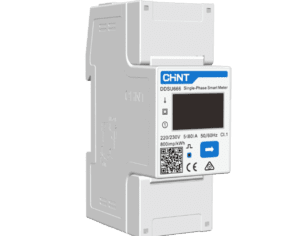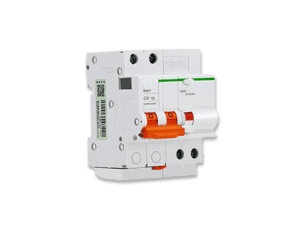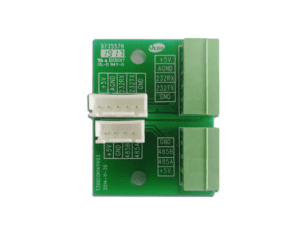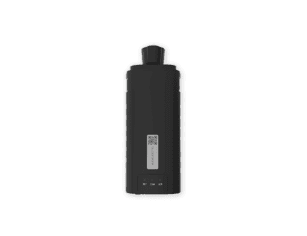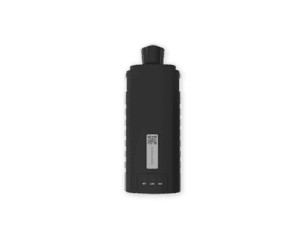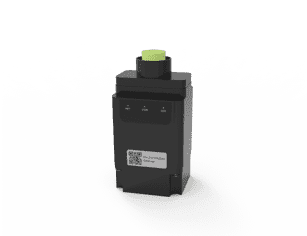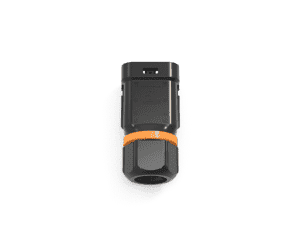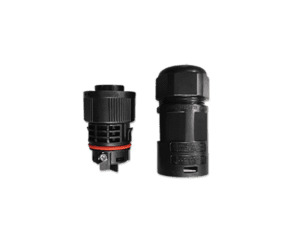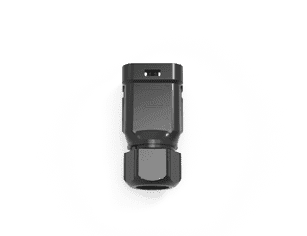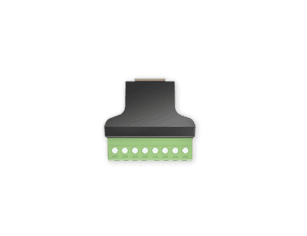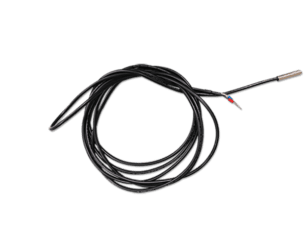So bestimmen Sie die richtige Größe des Solarwechselrichters für Ihr System
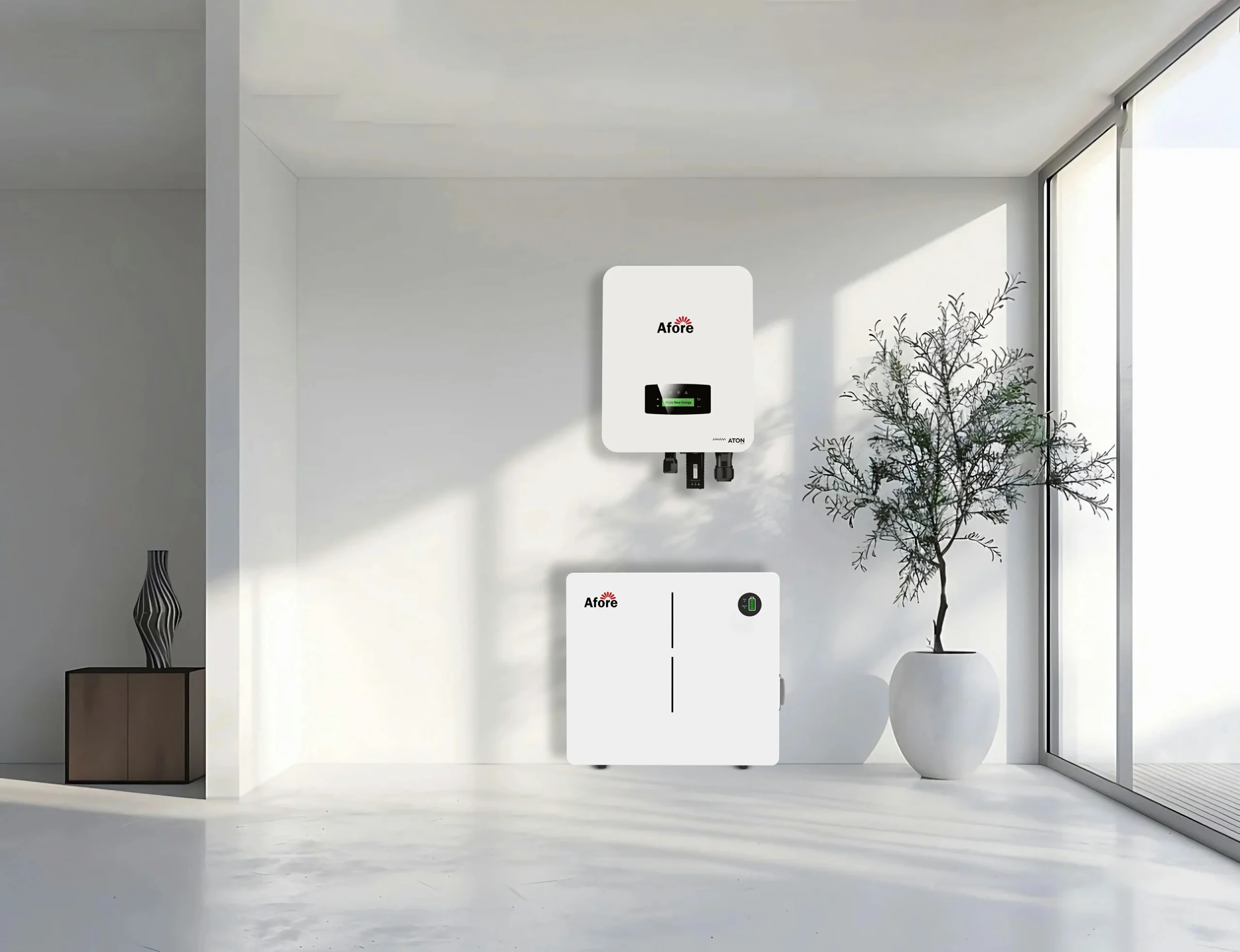
Inhaltsübersicht
Die Wahl der richtigen Wechselrichtergröße ist nicht nur ein technisches Detail, sondern einer der wichtigsten Schritte bei der Planung eines effizienten, kostengünstigen Solarenergiesystems. Ein perfekt dimensionierter Solarwechselrichter stellt sicher, dass Sie die von Ihren Modulen erzeugte Energie maximieren, unnötige Verluste vermeiden und Ihr Haus für langfristige Einsparungen vorbereiten. Unabhängig davon, ob Sie eine neue Solaranlage planen oder Ihre bestehende Anlage aufrüsten möchten, kann das Verständnis der Wechselrichterdimensionierung überwältigend sein. Aber keine Sorge - wir erklären Ihnen alles in klaren, praktischen Worten. In diesem Leitfaden erklären wir Ihnen genau, wie Sie die richtige Größe des Solarwechselrichters berechnen, welche Faktoren diese Entscheidung beeinflussen und wie Sie kostspielige Fehler wie das Abschneiden des Wechselrichters oder einen schlechten Wirkungsgrad vermeiden. Fangen wir an.
Die Rolle eines Solarwechselrichters in Ihrem System verstehen
Was macht ein Solar-Wechselrichter?
Wenn Sie sich in die Welt der Solarenergie begeben, werden Sie häufig auf den Begriff der Größe des Solarwechselrichters stoßen. Doch bevor Sie sich mit der Größe befassen, sollten Sie unbedingt verstehen, was ein Solarwechselrichter leistet. Einfach ausgedrückt ist er das Herzstück Ihrer Solarstromanlage. Er wandelt den von Ihren Solarmodulen erzeugten Gleichstrom in Wechselstrom um - also in den Strom, den Ihre Haushaltsgeräte und das Stromnetz nutzen.
Ohne den richtigen Solarwechselrichter würden Ihre Solarmodule Strom erzeugen, der praktisch unbrauchbar ist. Die Wahl des richtigen Wechselrichters ist also nicht nur eine technische Entscheidung, sondern eine grundlegende Entscheidung, die sich auf die Leistung, die Sicherheit und die Rentabilität Ihrer Solaranlage auswirkt.
Arten von Solarwechselrichtern
Wenn Sie sich für die Größe Ihres Solarwechselrichters entscheiden, ist es auch hilfreich, die verfügbaren Typen zu kennen:
- String-Wechselrichter: Diese Wechselrichter werden häufig in Wohngebäuden eingesetzt und verbinden mehrere Module zu einem "String".
- Mikro-Wechselrichter: Sie werden auf jedem Panel installiert und ermöglichen eine Optimierung auf Panel-Ebene.
- Hybrid-Wechselrichter: Sie arbeiten mit Batteriespeichersystemen zusammen und bieten Flexibilität.
- Zentral-Wechselrichter: Hauptsächlich in großen gewerblichen Anlagen eingesetzt.
Jeder Typ beeinflusst die Größe und den Wirkungsgrad des Solarwechselrichters, so dass die Wahl von Ihrer Systemkonfiguration und Ihren Zielen abhängt.
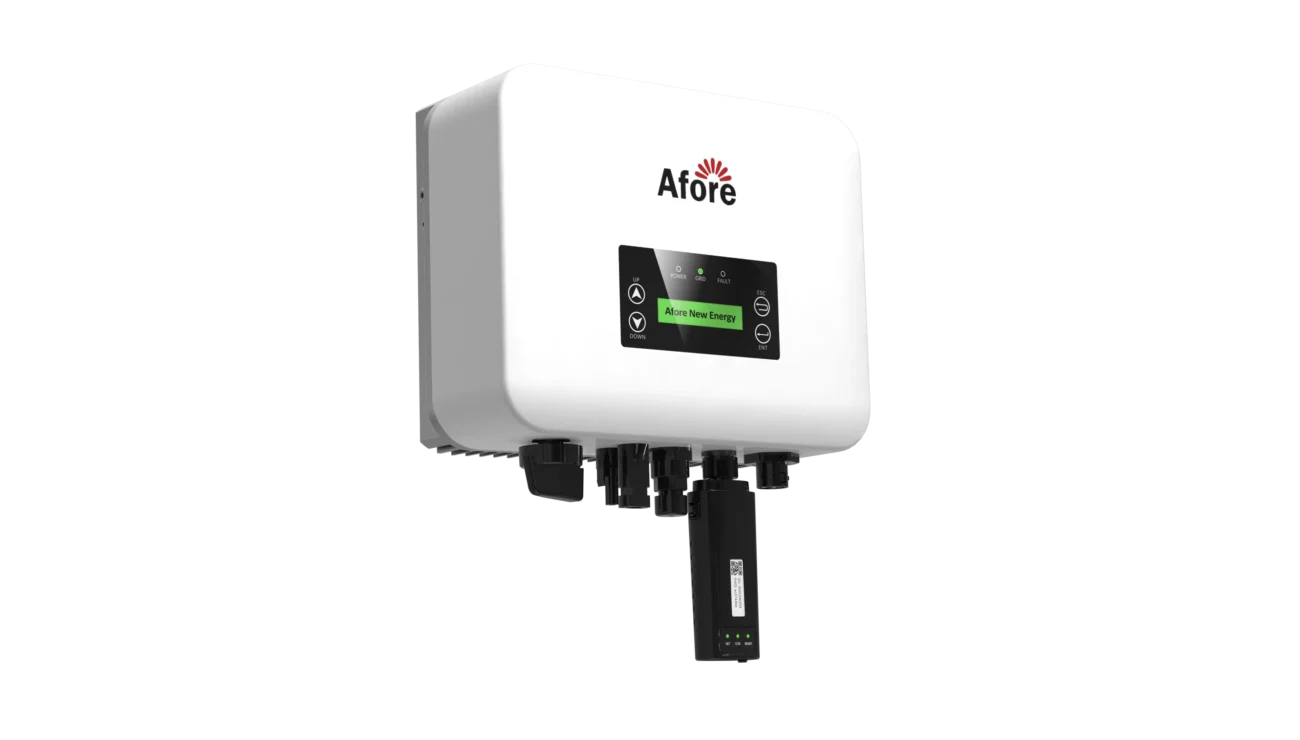
Was ist die Größe eines Solarwechselrichters und warum sie wichtig ist
Definition der Größe von Solarwechselrichtern
Wenn wir über die Größe von Solarwechselrichtern sprechen, beziehen wir uns auf die Nennausgangsleistung des Wechselrichters, die normalerweise in Kilowatt (kW) gemessen wird. Einfach ausgedrückt: Sie gibt an, wie viel elektrische Leistung Ihr Solarwechselrichter zu einem bestimmten Zeitpunkt verarbeiten und von Gleichstrom (DC) in Wechselstrom (AC) umwandeln kann. Diese Angabe bezieht sich nicht auf die physische Größe des Geräts, sondern auf seine elektrische Leistung.
Ein 5-kW-Wechselrichter ist beispielsweise für eine Dauerleistung von bis zu 5 Kilowatt aus Ihren Solarmodulen ausgelegt. Wenn Ihre Solaranlage in den Spitzenzeiten des Sonnenlichts mehr als die Nennkapazität des Wechselrichters erzeugt, kann der Wechselrichter nicht die gesamte Leistung verarbeiten - ein Teil der Energie wird abgeschnitten oder geht verloren. Aus diesem Grund ist die Wahl der richtigen Wechselrichtergröße von entscheidender Bedeutung: Sie müssen sicherstellen, dass der Wechselrichter die Energiemenge verarbeiten kann, die Ihre Solarmodule unter typischen Bedingungen erzeugen.
Die Größe des Wechselrichters spielt auch eine wichtige Rolle für das Gleichstrom-Wechselstrom-Verhältnis - eine entscheidende Kennzahl für die Auslegung eines jeden Solarsystems. Dieses Verhältnis vergleicht die Gesamtleistung Ihrer Solarmodule (in DC) mit der maximalen Leistung Ihres Wechselrichters (in AC). Im Idealfall arbeiten die meisten Systeme mit einem DC-AC-Verhältnis zwischen 1,15 und 1,25, obwohl einige Systeme je nach Design, Dachfläche und regionalen Bedingungen höher sind.
Es ist wichtig zu verstehen, dass die Größe des Solarwechselrichters sowohl mit der Kapazität Ihrer Solarmodule als auch mit Ihren Zielen für die Energienutzung übereinstimmen muss. Eine Unter- oder Überdimensionierung Ihres Wechselrichters kann sich auf alles auswirken, von den Anschaffungskosten Ihres Systems bis hin zu seinem langfristigen Energieertrag. Es ist ein Balanceakt zwischen Leistung, Effizienz und finanziellem Ertrag.
Auswirkungen auf Effizienz und Systemleistung
Die von Ihnen gewählte Größe des Solarwechselrichters hat einen direkten und messbaren Einfluss auf die Gesamteffizienz Ihres Solarenergiesystems. Es geht nicht nur darum, wie viel Strom Ihre Anlage erzeugt, sondern auch darum, wie konstant und zuverlässig dieser Strom genutzt oder gespeichert werden kann.
1. Wechselrichter-Clipping und Energieverlust
Wenn Ihre Solarmodule mehr Strom erzeugen, als Ihr Wechselrichter verarbeiten kann (vor allem während der Mittagssonne), wird der Wechselrichter den Überschuss "abschneiden". Dies wird als Wechselrichter-Clipping bezeichnet. Während ein gewisses Clipping erwartet wird und akzeptabel ist, kann ein übermäßiges Clipping zu Energieverlusten und einer geringeren Investitionsrendite führen. Wenn Sie beispielsweise eine hocheffiziente Solaranlage in einer sonnigen Region mit einem deutlich unterdimensionierten Wechselrichter kombinieren, kann ein beträchtlicher Teil Ihrer potenziellen Stromerzeugung verloren gehen.
2. Schlechte Leistung bei geringer Bestrahlungsstärke
Auf der anderen Seite kann ein überdimensionierter Wechselrichter in Zeiten geringer Sonneneinstrahlung nicht optimal funktionieren. Solarwechselrichter benötigen eine Mindesteingangsspannung, um effektiv zu funktionieren. Wenn Ihr Solarmodulfeld nicht genug Strom erzeugt - z. B. bei bewölktem Wetter oder am frühen Morgen - schaltet sich der Wechselrichter möglicherweise gar nicht ein. Dies führt dazu, dass die verfügbare Energie nicht genutzt werden kann.
3. Langlebigkeit und Verlässlichkeit des Systems
Die Verwendung eines richtig dimensionierten Solarwechselrichters trägt ebenfalls zur Langlebigkeit Ihres Solarsystems bei. Ein überlasteter oder nicht richtig angepasster Wechselrichter könnte sich überhitzen oder bei hoher Belastung überlastet werden, was zu einem frühzeitigen Ausfall führt. Umgekehrt kann ein leicht überdimensionierter, aber hochwertiger Wechselrichter komfortabler arbeiten und länger halten.
4. Energieüberwachung und Netzinteraktion
Ein gut dimensionierter Wechselrichter gewährleistet eine genaue Leistungsverfolgung und eine nahtlose Integration in Ihr Versorgungsnetz oder Batteriespeichersystem. Dies ist besonders wichtig bei netzgekoppelten Systemen, bei denen Energieexportgrenzen oder Einspeisevergütungen ins Spiel kommen. Einige Energieversorgungsunternehmen legen sogar Obergrenzen für die exportierbare Energiemenge fest, was die Bedeutung der Anpassung der Wechselrichtergröße an die technischen und rechtlichen Bedingungen noch unterstreicht.
5. Finanzielle Effizienz und ROI
Letztendlich führt die richtige Größe des Solarwechselrichters zu einer besseren finanziellen Rendite. Sie optimiert das Kosten-Leistungs-Verhältnis des Systems, indem sie sicherstellt, dass Sie nicht zu viel Geld für Kapazitäten ausgeben, die Sie nicht nutzen - oder wertvolle Energieerzeugung aufgrund einer schlechten Dimensionierung opfern. Wenn Ihr Solarsystem richtig dimensioniert ist, arbeitet es mit höchster Effizienz und bietet Ihnen das beste Preis-Leistungs-Verhältnis.
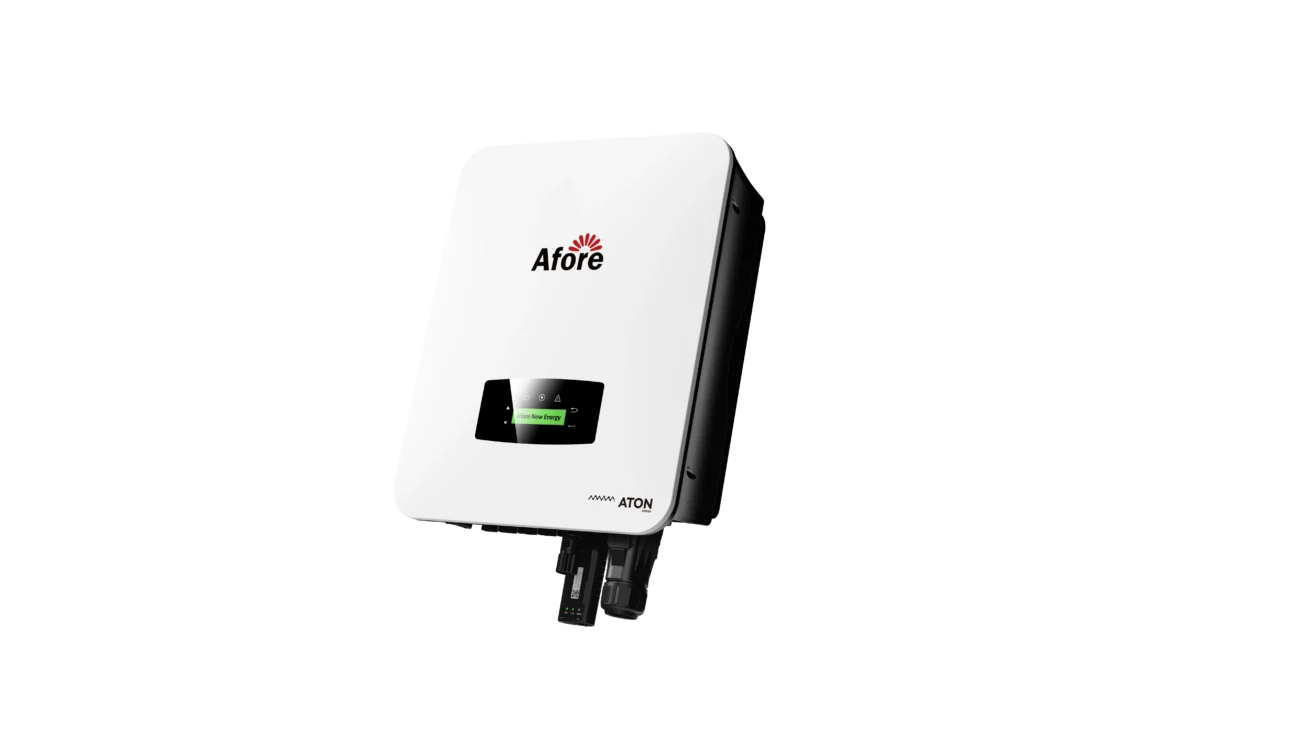
So berechnen Sie die richtige Wechselrichtergröße für Ihr Solarsystem
Die Bestimmung der richtigen Solarwechselrichtergröße ist kein Ratespiel, sondern eine Wissenschaft. Wenn Sie ein paar wichtige Schritte befolgen, können Sie Ihren Solarwechselrichter genau auf die Anforderungen Ihres Systems abstimmen und so unnötige Verluste vermeiden und Ihre langfristige Rendite steigern. Im Folgenden erläutern wir Ihnen die drei wichtigsten Schritte zur richtigen Dimensionierung Ihres Solarwechselrichters.
Schritt 1: Bestimmen Sie die Größe Ihres Solarmoduls
Der erste Schritt besteht darin, herauszufinden, wie viel Strom Ihre Solarmodule erzeugen können - dies wird als Größe der Solaranlage bezeichnet. Sie wird in der Regel in Kilowatt (kW) gemessen und durch Aufsummieren der Wattleistung aller Solarmodule berechnet.
Wenn Sie zum Beispiel zehn 400-Watt-Paneele installieren, beträgt die Gesamtgröße der Anlage:
10 x 400W = 4.000W = 4kW
Hierbei handelt es sich um die Gleichstromkapazität Ihres Systems, d. h. die Rohenergie, die Ihre Module unter idealen Bedingungen erzeugen können. Diese Zahl ist entscheidend, da sie als Ausgangspunkt für die Dimensionierung Ihres Wechselrichters dient.
Es ist auch wichtig zu wissen, dass Solarmodule selten den ganzen Tag über mit maximaler Leistung arbeiten. Faktoren wie Abschattung, Temperatur, Schmutzablagerungen und der Winkel Ihres Daches beeinflussen die tatsächliche Leistung. Auch wenn Ihre Paneele für 4 kW ausgelegt sind, kann ihre durchschnittliche Leistung im Laufe des Jahres etwas geringer sein.
Wenn Sie die Größe Ihrer Anlage kennen, können Sie einen Wechselrichter wählen, der diese Produktion effizient bewältigen kann, ohne dass Sie zu viel oder zu wenig in die Kapazität investieren müssen.
Schritt 2: Verstehen des Gleichstrom-Wechselstrom-Verhältnisses
Der zweite Schritt besteht darin, das Gleichstrom-Wechselstrom-Verhältnis Ihres Systems zu ermitteln, eine der wichtigsten Kennzahlen bei der Dimensionierung eines Solarwechselrichters. Dieses Verhältnis vergleicht die gesamte DC-Kapazität Ihrer Solarmodule mit der maximalen AC-Leistung, die Ihr Wechselrichter liefern kann.
DC-AC-Verhältnis = Größe der Solaranlage (DC) / Größe des Wechselrichters (AC)
Wenn Ihre Anlage zum Beispiel 6 kW und Ihr Wechselrichter 5 kW leistet, beträgt das Verhältnis von Gleichstrom zu Wechselstrom:
6 ÷ 5 = 1.2
Ein Verhältnis zwischen 1,15 und 1,25 gilt für die meisten privaten und gewerblichen Anlagen als ideal. Dies ermöglicht eine leichte Überdimensionierung der Module im Vergleich zum Wechselrichter, was die Energieausbeute erhöht, ohne die Leistung aufgrund gelegentlicher Überschneidungen wesentlich zu beeinträchtigen.
Warum leicht überdimensioniert?
Solarmodule erreichen selten ihre volle Nennleistung, es sei denn, es herrschen perfekte Bedingungen (kühle Temperaturen, direkte Sonne usw.). Durch eine leichte Überdimensionierung Ihrer Anlage kann Ihr Wechselrichter über einen längeren Zeitraum während des Tages näher an seiner Nennleistung arbeiten, was den Wirkungsgrad und die Investitionsrendite verbessert.
Im Gegensatz dazu kann ein unterdimensionierter Wechselrichter zu regelmäßigen Energieeinbrüchen während der Hauptsonnenstunden führen, während ein überdimensionierter Wechselrichter bei geringer Solarproduktion - vor allem am Morgen oder an bewölkten Tagen - möglicherweise nicht effizient arbeitet.
Wenn Sie in einem Gebiet mit hoher Sonneneinstrahlung leben oder ein System haben, das für den Betrieb in den frühen Morgenstunden oder am späten Nachmittag ausgelegt ist, kann ein höheres Gleichstrom-Wechselstrom-Verhältnis sinnvoll sein. Erkundigen Sie sich jedoch immer bei Ihrem örtlichen Installateur und Energieversorger, um sicherzustellen, dass Ihr Entwurf den Anschlussregeln und Leistungserwartungen entspricht.
Schritt 3: Berücksichtigung von Umwelt- und Systemfaktoren
Schließlich müssen Sie Umgebungsvariablen und systemspezifische Designfaktoren berücksichtigen. Dazu gehören:
1. Geografischer Standort und Sonneneinstrahlung
Ihr Standort hat einen großen Einfluss darauf, wie viel Sonnenlicht Ihre Module erhalten. Anlagen in Arizona oder Queensland erhalten viel mehr Sonnenenergie als Anlagen in Großbritannien oder im pazifischen Nordwesten. In Gebieten mit hoher Sonneneinstrahlung ist oft ein etwas höheres Verhältnis von Gleichstrom zu Wechselstrom möglich, während in Regionen mit geringer Sonneneinstrahlung eine engere Dimensionierung von Wechselrichter und Anlage sinnvoll sein kann, um längere Phasen der Unterproduktion zu vermeiden.
2. Dachausrichtung und Neigung
Nach Süden (in der nördlichen Hemisphäre) oder Norden (in der südlichen Hemisphäre) ausgerichtete Paneele erzeugen den gleichmäßigsten Strom. Nach Osten und Westen ausgerichtete Paneele können von einer überdimensionierten Anlage profitieren, um die Produktionsstunden zu verlängern, was ein höheres Gleichstrom-Wechselstrom-Verhältnis rechtfertigen kann - was wiederum die Entscheidung über die Größe Ihres Solarwechselrichters beeinflusst.
3. Beschattung und Wettermuster
Abschattungen durch nahe gelegene Gebäude, Bäume oder sogar Schornsteine können die Leistung verringern und die Leistung des Wechselrichters beeinträchtigen. Wenn Teilabschattungen ein Problem darstellen, kann der Einsatz von Mikro-Wechselrichtern oder Leistungsoptimierern sinnvoller sein als ein einzelner String-Wechselrichter. Auch in Gebieten mit häufiger Bewölkung oder hoher Luftfeuchtigkeit kann die Leistung sinken, was sich auf das beste Verhältnis für Ihr System auswirkt.
4. Systemverluste und Effizienz der Verkabelung
Bei allen Solarsystemen kommt es zu einem gewissen Leistungsverlust durch Verkabelung, Ineffizienz des Wechselrichters und Temperatureinflüsse. Ein leicht überdimensionierter Wechselrichter kann dazu beitragen, diese Verluste zu verringern, allerdings nur, wenn das Gesamtsystem unter Berücksichtigung dieser Faktoren konzipiert wurde.
5. Künftige Expansion
Wenn Sie planen, später weitere Module hinzuzufügen oder ein Batteriespeichersystem zu integrieren, sollten Sie dies bei der Wahl Ihres Wechselrichters bereits jetzt berücksichtigen. Die Wahl eines Hybrid-Wechselrichters oder eines Wechselrichters mit höherer Kapazität könnte sich langfristig finanziell und logistisch lohnen.

Überdimensionierung vs. Unterdimensionierung: Was ist das Beste für Sie?
Wenn es um die Wahl der optimalen Größe eines Solarwechselrichters geht, hört man oft von zwei Ansätzen: Überdimensionierung und Unterdimensionierung des Wechselrichters. Keine der beiden Methoden ist per se richtig oder falsch - alles hängt von Ihren Zielen, Ihrem Budget und den Sonnenverhältnissen an Ihrem Standort ab. Lassen Sie uns die Vor- und Nachteile jeder Strategie untersuchen, damit Sie eine fundierte Entscheidung treffen können, die mit der Auslegung Ihres Systems und Ihren langfristigen Energieerwartungen übereinstimmt.
Vorteile der Überdimensionierung von Wechselrichtern
Unter Überdimensionierung versteht man die Installation eines Solarwechselrichters, der etwas größer ist als das standardmäßige Gleichstrom-Wechselstrom-Verhältnis normalerweise erfordert. Sie könnten zum Beispiel einen 6,5-kW-Wechselrichter mit einem 6-kW-Solarmodulfeld kombinieren. Auf diese Weise erhalten Sie zusätzlichen Spielraum für Erweiterungen oder können Ihr System komfortabler betreiben, ohne an seine Grenzen zu stoßen.
Hier sind einige der häufigsten Gründe, warum sich Hausbesitzer und Installateure für eine Übergröße entscheiden:
1. Bessere Effizienz während der Spitzenlastzeiten
In heißen Klimazonen oder an Standorten mit sehr hoher Sonneneinstrahlung kann es vorkommen, dass Ihre Module kurzzeitig ihre Nennleistung überschreiten. Mit einem überdimensionierten Solarwechselrichter können Sie mehr von dieser Energie einfangen und umwandeln, anstatt sie durch Abschneiden zu verschwenden.
2. Raum für zukünftige Erweiterungen
Wenn Sie planen, später weitere Solarmodule hinzuzufügen - oder wenn Sie später ein Batteriespeichersystem installieren möchten - ist es sinnvoll, mit einem größeren Wechselrichter zu beginnen. Dies verringert den Bedarf an kostspieligen Upgrades oder Systemüberholungen.
3. Verbesserte Strapazierfähigkeit und Langlebigkeit
Ein Wechselrichter, der weit unter seiner maximalen Kapazität arbeitet, läuft in der Regel kühler und unterliegt weniger Verschleiß. Mit der Zeit kann dies die Lebensdauer Ihres Geräts verlängern und das Risiko einer Überhitzung verringern, insbesondere bei längerer Sonneneinstrahlung.
4. Einhaltung der Ausfuhrbeschränkungen
In einigen Märkten für Energieversorgungsunternehmen können Sie nur eine begrenzte Menge an Energie in das Netz einspeisen. Mit einem größeren Wechselrichter können Sie sicherstellen, dass Sie Ihre Exportgrenze erreichen, ohne die Leistung der Module zu begrenzen. Das bedeutet mehr nutzbaren Strom für Ihr Haus, anstatt die Solarproduktion unnötig einzuschränken.
5. Reibungslosere Integration mit Batterien und Smart-Home-Systemen
Eine Überdimensionierung des Wechselrichters kann Flexibilität für die zukünftige Integration von Batterien oder intelligenten Lastmanagementsystemen schaffen. Einige Hybrid-Wechselrichter benötigen zum Beispiel eine Mindestgrundleistung, um optimal mit Batterien zu funktionieren.
Dennoch ist es wichtig, die Größe nicht zu weit zu treiben. Ein Wechselrichter, der für Ihre Solaranlage zu groß ist, kann bei schwachem Licht oder in den frühen Morgen- und späten Nachmittagsstunden ineffizient arbeiten. Eine Überdimensionierung sollte immer strategisch und im Rahmen der Empfehlungen des Herstellers erfolgen.
Risiken der Unterdimensionierung eines Wechselrichters
Eine Unterdimensionierung oder die Auswahl eines Solarwechselrichters, der kleiner ist als die Leistung Ihrer Solaranlage, ist eine Strategie, die manche Hausbesitzer in Betracht ziehen, um die Anschaffungskosten zu senken. Die Verwendung eines 4-kW-Wechselrichters für eine 5-kW-Anlage führt beispielsweise zu einem Gleichstrom-Wechselstrom-Verhältnis von 1,25. Dieser Ansatz kann zwar in bestimmten Situationen gut funktionieren, aber es gibt echte Kompromisse, die man im Auge behalten muss.
1. Wechselrichter-Clipping während der Spitzenlastzeiten
Eines der größten Risiken bei Unterdimensionierung ist die Energieabschneidung. Wenn Ihre Module mehr Strom erzeugen, als Ihr Wechselrichter verarbeiten kann, wird der Wechselrichter den Überschuss "abschneiden". Das ist Energie, die Sie verlieren, und mit der Zeit summiert sich das. Während der sonnigen Mittagszeit - wenn die Produktion am höchsten ist - verschwenden Sie möglicherweise einen Teil der sauberen Energie, die Ihre Module erzeugen.
2. Reduzierte Leistung an Tagen mit hoher Strahlungsintensität
In Gebieten mit gleichmäßiger, starker Sonneneinstrahlung kann ein unterdimensionierter Wechselrichter zu einem Engpass werden und die Systemleistung regelmäßig bremsen. Wenn Ihr Ziel darin besteht, den Gesamtenergieertrag zu maximieren, könnte ein kleinerer Wechselrichter zu wenig leisten - vor allem an langen Sommertagen.
3. Eingeschränkte Kompatibilität mit Batterien
Einige Wechselrichter, die für Batteriespeichersysteme oder zukünftige Energiemanagement-Tools ausgelegt sind, erfordern eine Mindestkapazität. Die Wahl eines kleineren Wechselrichters kann Ihre Möglichkeiten einschränken, Ihr System später zu erweitern oder es in intelligente Netztechnologien zu integrieren.
4. Mögliche Gewährleistungslücken
In einigen Fällen kann eine erhebliche Diskrepanz zwischen der Leistung der Module und der Kapazität des Wechselrichters zum Erlöschen der Herstellergarantie oder zu Haftungsproblemen führen. Erkundigen Sie sich immer bei Ihrem Installateur und den technischen Richtlinien des Wechselrichterherstellers, bevor Sie Ihre Wahl endgültig treffen.
Wann eine Unterdimensionierung sinnvoll sein kann
Trotz der potenziellen Nachteile gibt es Situationen, in denen eine Unterdimensionierung Ihres Solarwechselrichters tatsächlich ein kluger, strategischer Schachzug sein kann - vor allem, wenn sie bewusst und auf der Grundlage realer Anlagendaten erfolgt.
1. Haushaltszwänge
Wenn Sie eine Solaranlage innerhalb eines begrenzten Budgets installieren möchten, können Sie durch eine Unterdimensionierung des Wechselrichters die Anfangskosten senken. Kleinere Wechselrichter sind in der Regel erschwinglicher, und wenn Sie mit einem leichten Rückgang der Energieleistung in Spitzenzeiten einverstanden sind, kann der Kompromiss akzeptabel sein.
2. Hochgelegene oder wolkengefährdete Regionen
In Gegenden mit häufiger Bewölkung, Morgennebel oder generell geringer Sonneneinstrahlung erreichen Ihre Solarmodule möglicherweise nur selten ihre volle Leistung. In solchen Fällen wird ein leicht unterdimensionierter Wechselrichter nur selten überschüssige Leistung abschneiden - weil es gar nicht viel Überschuss gibt. Mit dieser Einstellung kann der Wechselrichter länger mit voller Leistung betrieben werden, was die tägliche Umwandlungseffizienz verbessert.
3. Time-of-Use-Tarife
Einige Abrechnungsmodelle von Energieversorgern belohnen die Nutzung oder den Export von Energie zu bestimmten Tageszeiten (z. B. abends). Wenn Ihr System für den Eigenverbrauch und nicht für die maximale Stromerzeugung am Tag ausgelegt ist, kann ein unterdimensionierter Wechselrichter geeignet sein, da Sie keine großen Mengen ins Netz einspeisen wollen.
4. Optimierung des Wirkungsgrads bei maximaler Leistung
Wenn Sie mehr Wert auf die Systemeffizienz als auf die reine Leistung legen, kann ein Wechselrichter, der den ganzen Tag über nahe an seiner Nennleistung betrieben wird, effizienter sein als ein Wechselrichter, der weit unter seinem Höchstwert läuft. Dies gilt insbesondere für ältere oder preisgünstige Wechselrichtermodelle, die bei mäßiger Belastung besser arbeiten.
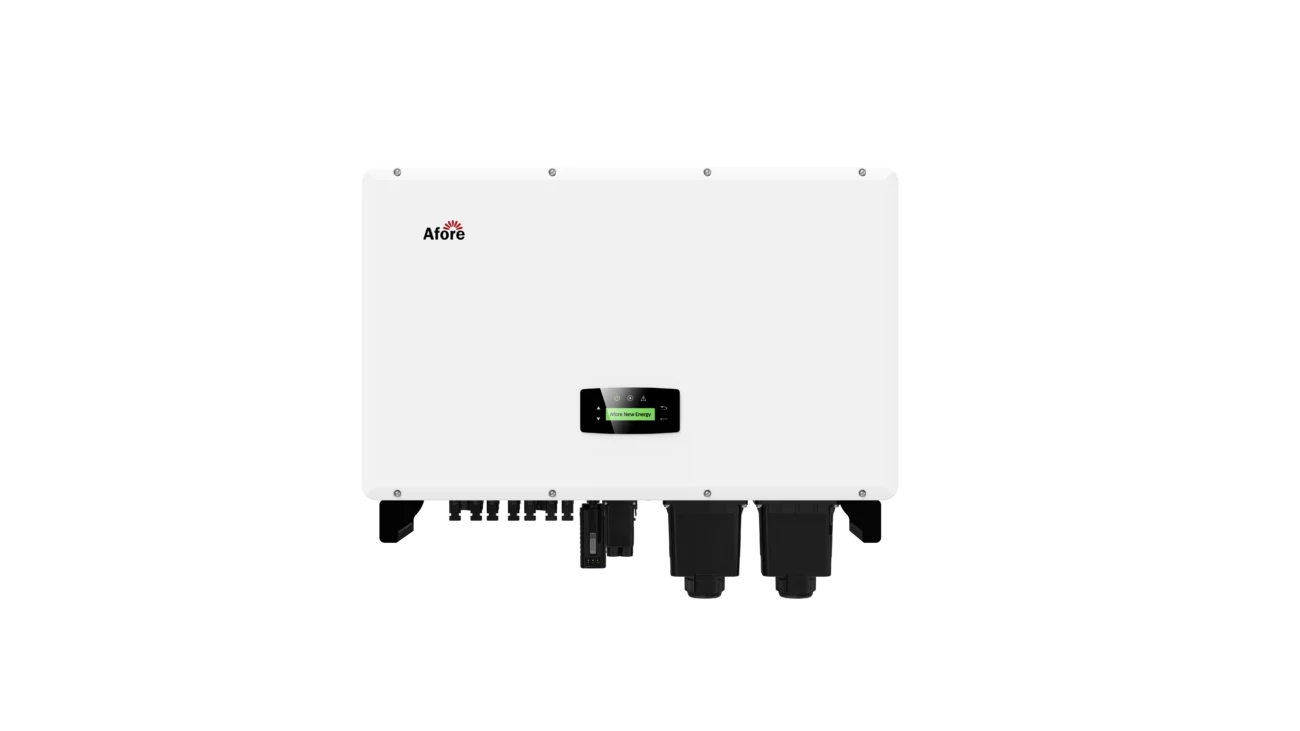
Häufig zu vermeidende Fehler bei der Wechselrichterdimensionierung
Die Wahl der richtigen Wechselrichtergröße kann über die Leistung und die finanzielle Rentabilität Ihres Solarsystems entscheiden. Obwohl das Konzept einfach zu sein scheint - passen Sie den Wechselrichter an die Leistung Ihrer Module an - gibt es viele Nuancen, die zu kostspieligen Fehlern führen können, wenn sie übersehen werden. Einige der häufigsten Fallstricke bei der Auswahl von Solarwechselrichtern treten auf, wenn Hausbesitzer sich auf den Preis statt auf die Leistung konzentrieren oder vergessen, für die Zukunft zu planen. Werfen wir einen genaueren Blick auf die wichtigsten Fehler, die es zu vermeiden gilt.
Ignorieren des Gleichstrom-Wechselstrom-Verhältnisses
Einer der häufigsten und schädlichsten Fehler bei der Auslegung von Solarsystemen ist das Ignorieren des DC-AC-Verhältnisses - eine kritische Kennzahl, die die Gesamtwattleistung Ihrer Solarmodulreihe (DC) mit der Nennleistung Ihres Wechselrichters (AC) vergleicht.
Warum ist dieses Verhältnis so wichtig? Weil Ihr Solar-Wechselrichter innerhalb eines bestimmten Leistungsbereichs arbeiten muss, um effizient zu sein. Ein System mit einem schlecht ausbalancierten Gleichstrom-Wechselstrom-Verhältnis verliert entweder Energie durch Clipping (wenn der Wechselrichter zu klein ist) oder erbringt während des größten Teils des Tages keine Leistung (wenn der Wechselrichter zu groß ist).
Wenn Sie beispielsweise eine 6,6-kW-Anlage mit einem 4-kW-Wechselrichter installieren, erhalten Sie ein Gleichstrom-Wechselstrom-Verhältnis von 1,65 - weit über dem allgemein empfohlenen Bereich von 1,15 bis 1,25. In diesem Fall würde eine große Menge an potenzieller Energie während der Spitzenzeiten der Sonneneinstrahlung abgeschnitten werden. Würden Sie dagegen einen 8-kW-Wechselrichter für dieselbe Anlage installieren, könnte das System morgens oder an bewölkten Tagen die Mindestbetriebsschwelle des Wechselrichters nicht erreichen, was zu einem Erzeugungsverlust führen würde.
Das Verständnis und die Beachtung des Gleichstrom-Wechselstrom-Verhältnisses stellen sicher, dass Ihr System unter verschiedenen Bedingungen effizient arbeitet und so die Energieausbeute und die finanzielle Leistung im Laufe der Zeit maximiert.
Die Wahl der billigsten Option ohne Berücksichtigung der Qualität
Machen wir uns nichts vor: Solaranlagen sind eine Investition. Und wie bei den meisten Investitionen bekommt man das, wofür man bezahlt. Einer der häufigsten Fehler besteht darin, den Solarwechselrichter ausschließlich nach dem Preis auszuwählen, ohne auf Effizienz, Zuverlässigkeit, Herstellersupport oder Garantie zu achten.
Nicht alle Wechselrichter sind gleich. Es mag zwar verlockend sein, sich für eine preisgünstige Option zu entscheiden, aber das kann zu Problemen führen:
- Geringerer Umwandlungswirkungsgrad, d. h. mehr Energie geht bei der Umwandlung von Gleich- in Wechselstrom verloren.
- Kürzere Garantiezeiten und eingeschränkter Kundensupport.
- Inkompatibilität mit Batterien, intelligenter Überwachung oder zukünftigen Erweiterungen.
- Höheres Ausfallrisiko, insbesondere bei extremen Temperaturen oder unter hoher Belastung.
Keine Planung für die Systemerweiterung
Ein weiterer Fehler, der bei der Bestimmung der Größe Ihres Solarwechselrichters übersehen wird, ist die Nichtberücksichtigung einer zukünftigen Systemerweiterung. Bei der Solarenergie geht es nicht nur um die Gegenwart, sondern auch darum, was Sie in fünf oder zehn Jahren vielleicht brauchen.
Hier sind einige häufige Szenarien, in denen die Erweiterung relevant wird:
- Sie planen die Anschaffung eines Elektrofahrzeugs (EV) und benötigen mehr Solarstrom, um den Ladevorgang auszugleichen.
- Sie beabsichtigen, ein Batteriespeichersystem hinzuzufügen, das möglicherweise einen Hybrid-Wechselrichter oder eine höhere Leistungskapazität erfordert.
- Der Energieverbrauch in Ihrem Haushalt wird wahrscheinlich steigen - vielleicht renovieren Sie, bauen einen Pool ein oder Ihre Kinder werden älter und benutzen mehr Geräte.
Wenn Ihr aktueller Wechselrichter zu eng an Ihre ursprüngliche Panelkonfiguration angepasst ist, haben Sie möglicherweise nicht die Flexibilität, die Anlage zu erweitern, ohne den Wechselrichter komplett auszutauschen - ein kostspieliger und vermeidbarer Fehler.
Wenn Ihre Solaranlage zum Beispiel 5 kW leistet und Sie einen 5-kW-Wechselrichter kaufen, bleibt kein Raum für künftiges Wachstum. Entscheiden Sie sich dagegen für einen 6- oder 6,5-kW-Wechselrichter, haben Sie Spielraum für eine Erweiterung, ohne dass Sie wichtige Systemkomponenten ersetzen müssen.
Es lohnt sich auch, bei Ihrem Installateur nachzufragen, ob es gesetzliche Beschränkungen gibt. In einigen Gebieten gibt es Obergrenzen für die Wechselrichterkapazität oder für die Netzeinspeisung. Wenn Sie diese von Anfang an kennen, können Sie eine Systemgröße wählen, die keine größeren Änderungen erfordert, wenn Ihr Bedarf wächst.
Schlussfolgerung
Die Wahl der richtigen Solarwechselrichtergröße ist sowohl eine Wissenschaft als auch eine Kunst. Sie erfordert ein Verständnis Ihres Energiebedarfs, Ihrer örtlichen Umgebung und des Zusammenspiels der verschiedenen Komponenten. Vom Wirkungsgrad des Wechselrichters bis zur Kapazität der Module zählt jedes Detail.
Der Ratschlag? Sparen Sie nicht an der falschen Stelle. Arbeiten Sie mit erfahrenen Fachleuten zusammen, verwenden Sie vertrauenswürdige Marken und planen Sie immer voraus. Der richtige Solarwechselrichter ist nicht nur ein Gerät - er ist eine langfristige Investition in saubere, zuverlässige Energie für Ihr Zuhause. Wenn Sie hochwertige Solarwechselrichter kaufen möchten, besuchen Sie Afore, ein renommiertes Hersteller von Solarwechselrichtern. Ob es sich um eine Hybrid-Wechselrichter, Speicher-Wechselrichter oder String-Wechselrichter, Afore hat alles.
Im Zweifelsfall gilt: Ein gut dimensioniertes System ist ein optimiertes System. Wenn Sie von Anfang an alles richtig machen, können Sie jahrzehntelang Energie sparen und beruhigt sein.

Häufig gestellte Fragen zur Größe von Solarwechselrichtern
-
Ist ein größerer Solarwechselrichter besser?
Nicht immer. Es ist ein weit verbreiteter Irrglaube, dass ein größerer Wechselrichter automatisch eine bessere Leistung bedeutet. In Wirklichkeit arbeitet ein überdimensionierter Solarwechselrichter möglicherweise nicht effizient, wenn Ihre Solaranlage nicht konstant genug Energie erzeugt, um die Kapazität zu nutzen.
Wechselrichter haben eine Mindestaktivierungsschwelle, d. h. sie schalten sich nur dann ein oder arbeiten effizient, wenn die Eingangsspannung ausreichend ist. Ein zu großer Wechselrichter in einem kleinen System kann in den frühen Morgenstunden oder bei bewölktem Wetter längere Zeit inaktiv bleiben, was zu einem Erzeugungsausfall führt.
Eine leichte Überdimensionierung des Wechselrichters - im Rahmen der von der Industrie empfohlenen Verhältnisse - kann jedoch Spielraum für künftige Erweiterungen oder eine bessere Leistung in Spitzenzeiten bieten. Aber wenn es um die Größe von Solarwechselrichtern geht, ist größer nicht immer besser. Es kommt auf das richtige Verhältnis an. -
Wie wähle ich die richtige Wechselrichtergröße?
Die Wahl der richtigen Größe des Solarwechselrichters erfolgt in drei wichtigen Schritten:
1. Berechnen Sie die Größe Ihrer Solaranlage (Gesamt-Gleichstromleistung Ihrer Module).
2. Bestimmen Sie Ihr ideales Gleichstrom-Wechselstrom-Verhältnis, das normalerweise zwischen 1,15 und 1,25 liegt.
3. Anpassung an reale Faktoren wie Beschattung, Klima, zukünftige Nutzungssteigerung oder Batteriespeicher.
Nehmen wir an, Ihre Solarmodule haben eine Gesamtkapazität von 6,6 kW. Ein gutes Wechselrichterpaar könnte ein 5-kW-Gerät sein, das Ihnen ein Gleichstrom-Wechselstrom-Verhältnis von etwa 1,32 bietet. Das liegt zwar etwas über dem Idealbereich, ist aber je nach den Bedingungen Ihres Standorts noch akzeptabel.
Wenden Sie sich immer an einen zertifizierten Solarinstallateur, der die Ausrichtung Ihres Daches, die Beschattung, den Energiebedarf und die örtlichen Netzanforderungen beurteilen kann, bevor er die Größe Ihres Wechselrichters festlegt. Es geht nicht nur um nackte Zahlen - es geht um den Kontext Ihres Systems. -
Woher weiß ich, welche Größe der Wechselrichter für mein Solarsystem haben muss?
Um die richtige Größe des Solarwechselrichters zu ermitteln, addieren Sie zunächst die Wattleistung der geplanten Solarmodule. Wenn Sie fünfzehn 400-Watt-Paneele installieren, beträgt Ihre Anlage 6.000 Watt oder 6 kW. Teilen Sie dann diese Zahl durch die Nennleistung des Wechselrichters, um das Gleichstrom-Wechselstrom-Verhältnis zu ermitteln.
Wenn Sie einen maximalen Wirkungsgrad bei minimalem Energieverlust anstreben, sollten Sie einen Wechselrichter wählen, der ein ausgewogenes Verhältnis bietet - in der Regel zwischen 1,1 und 1,3. Ein 5-kW-Wechselrichter wäre eine übliche Wahl für eine 6-kW-Anlage.
Allerdings können Faktoren wie Ihr Standort, Ihr Energieverbrauchsverhalten, die Nutzungszeiten und die Frage, ob Sie später Batterien installieren wollen, die endgültige Entscheidung über die Größe beeinflussen. Es gibt keine pauschale Antwort - der Kontext ist entscheidend. -
Kann ich einen kleineren Wechselrichter mit einer größeren Solaranlage verwenden?
Ja, das kann man - und in manchen Situationen kann es sogar die bessere Wahl sein. Dies wird als Unterdimensionierung des Wechselrichters bezeichnet und ist unter den richtigen Bedingungen ein zulässiger Konstruktionsansatz.
Durch eine Unterdimensionierung kann Ihr Solarwechselrichter mehr Stunden am Tag nahe an seiner maximalen Leistung betrieben werden, was die Effizienz verbessern kann. Wenn Ihre Module jedoch häufig mehr Strom erzeugen, als der Wechselrichter verarbeiten kann (insbesondere während der Hauptsonnenstunden), wird das System diesen überschüssigen Strom abschneiden, was zu einem Erzeugungsverlust führt.
Ein übliches System für Wohngebäude ist eine 6,6-kW-Anlage in Verbindung mit einem 5-kW-Wechselrichter. Dieser Ansatz bietet ein ausgewogenes Verhältnis zwischen Kosten, Netzkonformität und Energieleistung, insbesondere in Gebieten, in denen Versorgungsunternehmen die Größe des Wechselrichters, den Sie an das Netz anschließen können, begrenzen.
Ja, ein kleinerer Wechselrichter kann gut mit einer größeren Solaranlage zusammenarbeiten, aber er muss absichtlich und innerhalb sicherer technischer Parameter entworfen werden. -
Was passiert, wenn mein Wechselrichter zu groß oder zu klein ist?
Die falsche Dimensionierung Ihres Wechselrichters kann zu echten Leistungsproblemen führen:
- Zu groß: Der Wechselrichter arbeitet möglicherweise nicht effizient, insbesondere bei geringer Sonneneinstrahlung. Er könnte mehr Zeit im Leerlauf verbringen oder zu wenig Leistung haben, was zu einer geringeren Gesamtenergieproduktion führt. Außerdem zahlen Sie möglicherweise mehr für die Wechselrichterkapazität, die Sie nicht nutzen.
- Zu klein: Das System kann in Zeiten hoher Produktion Energie abschneiden, wodurch potenzielle Solarenergie verschwendet wird. Dies kann zwar manchmal beabsichtigt und akzeptabel sein, aber eine übermäßige Begrenzung kann Ihre Investitionsrendite verringern und die Systemleistung senken.
Die richtige Größe des Solarwechselrichters sollte ein Gleichgewicht zwischen Anschaffungskosten, Energieeffizienz, täglichen Produktionsmustern und zukünftigem Wachstum herstellen. Es geht um Systemoptimierung - und nicht nur um die Wahl des Preises oder der maximalen Wattleistung.




